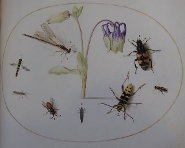It’s been a while since I’ve featured a story about a technology that could drastically reduce (or even eliminate) animal testing. Researchers in the Netherlands have announced some guts-on-a-chip research that may do just that. From an Aug. 22, 2017 news item on ScienceDaily,
Research conducted at Leiden has established that guts-on-chips respond in the same way to aspirin as real human organs do. This is a sign that these model organs are good predictors of the effect of medical drugs on the human body.
A method to test medical drugs for efficacy and potential side-effects, but then much cheaper and using the fewest possible lab animals: this is likely to be possible in future thanks to organs-on-chips, miniature model organs on microchips. In these model organs, which are equipped with human organ cells and microfluidic channels, researchers and pharmacists can mimic the working of an organ.
An Aug. 17, 2017 University of Leiden (Universiteit Leiden) press release, which originated the news item, provides more detail,
Leiden researchers, their spin-off company Mimetas and pharmaceutical company Roche have now shown that one type of organ chip experiences the same side-effects from the drug aspirin as the same organ in the human body. This is good news, because it is a sign that these miniature model organs are good predictors of the effect of medical drugs in the human body.
Aspirin
The researchers exposed 357 guts-on-chips for a significant period to the substance acetylsalicylic acid, better known as the analgesic aspirin. It has been known for a long time already that this substance can lead to gastrointestinal perforation, a complication that can be fatal if untreated. ‘We saw exactly the same side-effects occur in our guts-on-chips,’ says Professor of Analytical Biosciences Thomas Hankemeier. ‘In our model guts the gut wall also became more permeable after the drug had been administered.’
Effectiveness of candidate drugs
According to Hankemeier, the research shows that organs-on-chips are suited to testing a medical drug for efficacy and side-effects. This is good news for pharmacists, because the model organs make it easier for them to evaluate whether candidate drugs are effective or harmful. Many substances would be excluded from futher research before a drug entered the lab animal phase. This would help reduce the cost of drug production and mean less animal testing.
Diagnosing diseases
Organs-on-chips have taken off in recent years. They will be increasingly important in the near future, not just in drug development but also in the diagnosis of disease. Leiden researchers are at the forefront of this development. Hankemeier and a number of other groups (Erasmus MC, VUmc, RU Groningen) have been awared a 1.5 million ZonMW grant to research the effect of the body’s micro-organisms in the gut on the development of dementia. Organ-on-a-chip technology will play an important role here. Mimetas is the first company in the world to produce and sell organ chips on a large scale.
Here’s a link to and a citation for the paper,
Membrane-free culture and real-time barrier integrity assessment of perfused intestinal epithelium tubes by Sebastiaan J. Trietsch, Elena Naumovska, Dorota Kurek, Meily C. Setyawati, Marianne K. Vormann, Karlijn J. Wilschut, Henriëtte L. Lanz, Arnaud Nicolas, Chee Ping Ng, Jos Joore, Stefan Kustermann, Adrian Roth, Thomas Hankemeier, Annie Moisan, & Paul Vulto. Nature Communications 8, Article number: 262 (2017) doi:10.1038/s41467-017-00259-3 Published online: 15 August 2017
This paper is open access.
You can find Mimetas here.

